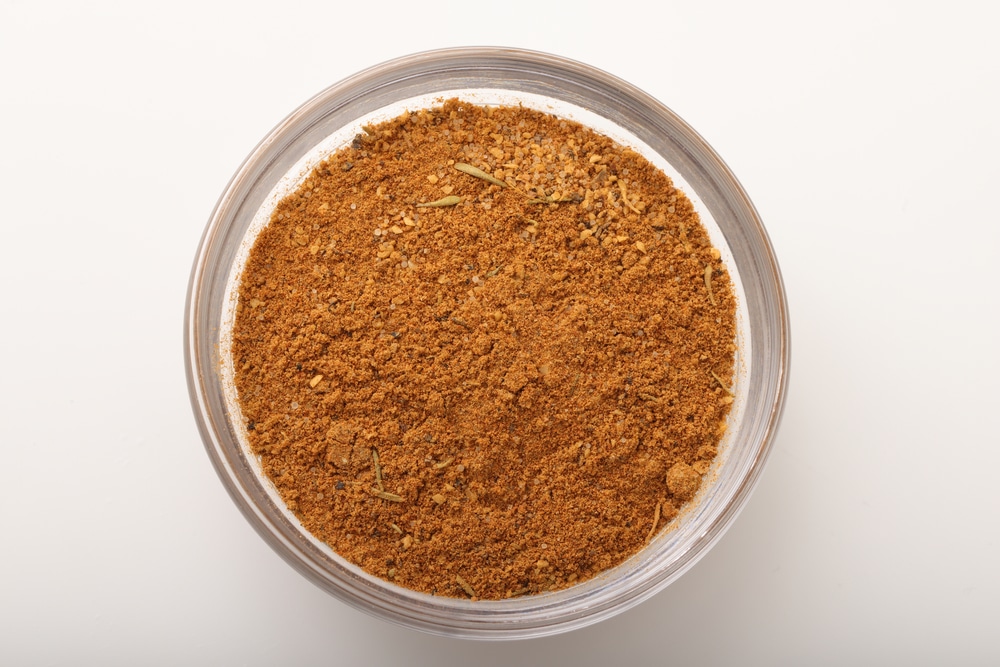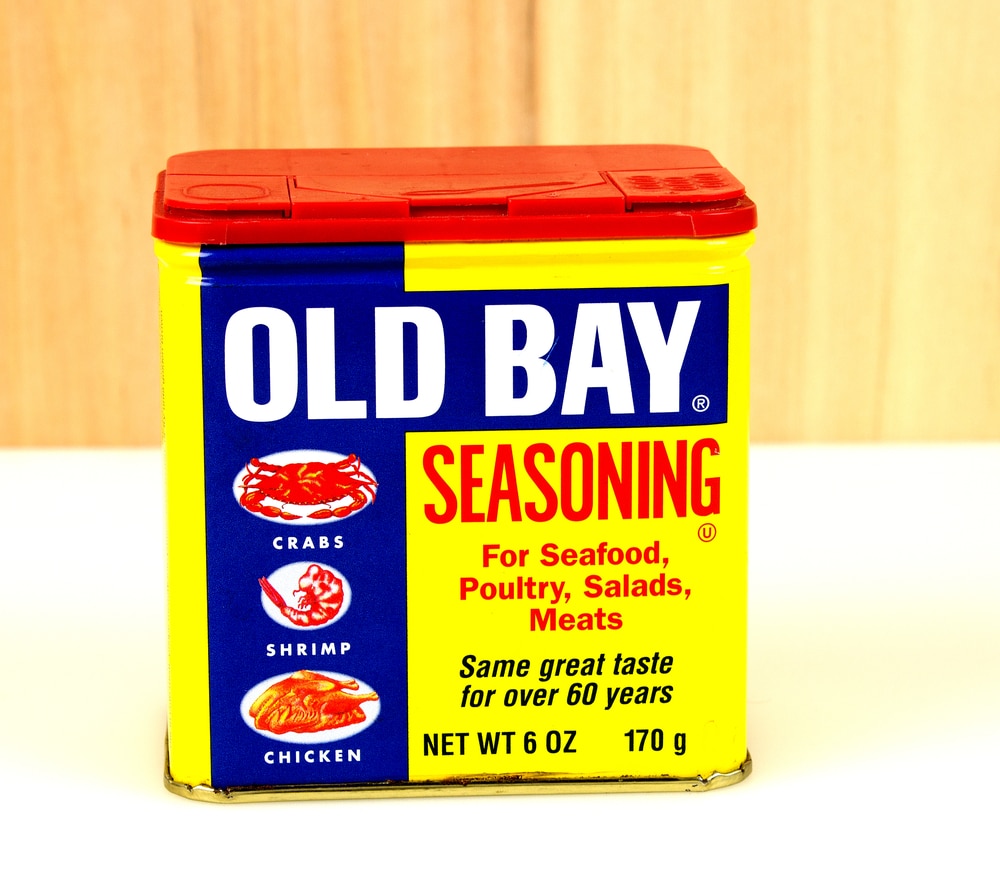Both Old Bay seasoning and creole seasoning are our regional favorites; whether you live in Maryland or Louisiana, each geographical area holds strong connections to their food, how it’s prepared, and how it tastes.
The main difference between creole seasoning and Old Bay is that Old Bay contains more distinct spices in its blend. On the other hand, creole seasoning can be more flexible with ingredients and composition.
Both creole seasoning and Old Bay seasoning are great ways to season foods from seafood to soups to pieces of meat. Understanding when to use each option is essential to ensure your food is flavorful and delicious. While both are often used to flavor seafood, like shrimp, both have long-standing traditions of use on nearly everything!
Old Bay seasoning has become popular to add to seafood, and it is part of nearly every dish in Maryland. Companies have used Old Bay to season potato chips, and restaurants have used the spice to sprinkle on french fries.
On the other hand, Creole seasoning is often used to blacken fish at seafood restaurants and is a crucial ingredient for making gumbo or etouffee. Creole seasoning is synonymous with the state of Louisiana, where slowly developed flavors and hot sauce reign supreme.
Creole Seasoning vs Old Bay
- Appearance: Both creole seasoning and Old Bay seasoning look substantially similar; the paprika in both products gives each a distinctive red color. When looking closely at a creole seasoning, you might see darker flakes of spice which might be black pepper, dried oregano, or dried basil.
- Flavor: Old Bay has a relatively mild flavor with subtle heat, while creole seasoning can be much spicier depending on the ratio of paprika in the recipe. Both spices have a complex flavor that brings life to your savory dishes.
- Shelf Life: Since McCormick mass-produces Old Bay, each container will have a “best by” date on the container. If mixing creole seasoning at home, it is usually best to use your blend within six months. Spices tend to last longer when stored in a cool and dry place. Some chefs even vacuum seal and store their spices in the freezer to preserve the good for a longer period of time.
- Use Cases: Both are versatile spices and are used in many seafood dishes. Cooks use creole spice to develop flavors in cooked dishes, while Old Bay is sprinkled on top of everything from melon to popcorn to shrimp.
You may also be interested in: Cajun vs Creole seasoning comparison.
Comparison Table Between Creole Seasoning and Old Bay
The most important ingredient in both options is paprika, it offers the mild heat and signature associated with both creole seasoning and Old Bay seasoning.
| Ingredients | Old Bay* | Creole Seasoning |
| Celery seed | ✓ | ✓ |
| Paprika | ✓ | ✓ |
| Black pepper | ✓ | ✓ |
| Dry mustard | ✓ | ✓ |
| Red pepper | ✓ | |
| Onion powder | ✓ | |
| Cayenne pepper | ✓ | |
| Garlic powder | ✓ | |
| Oregano | ✓ |
* Old Bay is a unique and proprietary blend of spices created by the McCormick Seasoning company.
Can You Substitute creole Seasoning and Old Bay?
Yes, you can substitute creole seasoning and Old Bay seasoning. The two seasonings are suitable substitutes for one another, though they differ in flavor slightly–particularly when measuring spiciness.
Old Bay includes celery seed and paprika, which are necessary for a creole seasoning blend. If you need to use Old Bay instead of creole seasoning, try adding a bit of extra paprika, black pepper, or garlic powder to enhance the effects of the flavor in your dish.
Old Bay seasoning is a distinctive spice blend owned by McCormick, made using a precise and consistent recipe. While Creole seasoning is an umbrella term for a mix of spices where proportions shift from chef to chef. Certain key ingredients are essential for creole seasoning, but the proportions vary.
What is Creole Seasoning?

Creole cuisine originated in and near New Orleans, Louisiana. It is a blend of cooking methods and flavors from enslaved Africans, Native Americans, and Europeans, like the French, who settled the area.
Ingredients in creole seasonings vary depending on the chef, the kitchen, and the geographical region, meaning a standard recipe for the spice blend does not exist. However, most include some variations of paprika, garlic, oregano, and black or white pepper.
Creole seasoning can be spicy. While every blend is a red color that stems from the paprika in the mix, which is generally a mild spice. However, some cooks, especially in the Louisiana region, will add cayenne pepper to their creole blend, giving the spice mix an extra punch of heat. Once a certain amount of cayenne is added, some cooks prefer to call the spice mix a cajun blend.
How to use creole seasoning:
Creole cooks use the seasoning blend on almost every savory dish served from their kitchen. It is very popular to use as a dry rub on various meats from poultry to pork before grilling or roasting. Creole seasoning is also delicious when added to seafood or sauces to enhance the flavor.
Some chefs have experimented with other ways to incorporate creole seasoning. For instance, if topping a casserole with breadcrumbs, add a bit of creole seasoning to the mixture before shaking on top. Additionally, some people like to add creole seasoning to the flour dredge when preparing to fry chicken which ultimately gives the crispy outer skin of the chicken and savory and spicy kick.
If you are an adventurous home cook, try making one of the traditional dishes that creole seasonings were initially intended for, like gumbo or jambalaya. Most cajun and creole foods begin with a mirepoix of celery and onions, or bell pepper and carrots. From there, a roux forms. Then spices, like a creole seasoning, are added to develop flavors of the dish stews and cooks, resulting in a flavorful meal.
If you need proper replacement for Old bay, do check 0ur list of 5 most common old bay seasoning substitute.
What is Old Bay?

Old Bay Seasoning is a blend of spices from Baltimore, Maryland, and named the Old Bay Line, a passenger ship transporting people from Baltimore to Norfolk, Virginia, along the Chesapeake Bay in the 1900s. The regions encompassing Maryland, Washington, D.C., and Virginia are more commonly known as the Mid-Atlantic region of the county.
The seasoning mixes celery salt, black pepper, paprika, and more. The blend ratio is kept secret, so while home cooks might try to replicate the taste at home, it is nearly impossible. In 1990, the seasoning brand was purchased by McCormick & Company, but the larger spice company maintained the traditional label and look, selling the spice in a classic yellow can. Now, McCormick sells a wide array of items under the Old Bay name, like seasoning packets for crab cakes, cocktail sauce, and seafood batter mix. There is even an Old Bay Bloody Mary Mix!
How to Use Old Bay:
Old Bay seasoning was originally used with crab and shrimp and other clam chowder and oyster stew recipes. However, as its popularity grew, many have tried using the seasoning on popcorn, deviled eggs, fried chicken, boiled peanuts, and potato chips.
Regional potato chip manufacturer Utz created the original “Crab Chip” based on a similar mix of spices, and in 2018 Lay’s followed suit by selling its own Old Bay-seasoned “Chesapeake Bay Crab Spice” chips.
Most restaurants and eateries in the Mid-Atlantic region offer some dish or condiment that includes the area’s favorite flavors encapsulated by Old Bay seasoning. For instance, some bars in Maryland offer an Old Bar rimmed pint glass when they pour a draft of National Bohemian beer.
A can of Old Bay in the cupboard is the key to a flavorful and fun dish for home cooks. From salmon croquettes to French fires, adding a sprinkle of Old Bay will enhance the savory flavors of your meal!
Final Thoughts
Understanding when and how to use either creole seasoning or obey seasoning is essential in becoming a better home cook. While similar in appearance, the taste between the two options can shift dramatically since creole seasoning can have spicier additions like white pepper or Cayenne pepper.
Both options are relatively easy to find. Many grocery stores, especially those in the mid-Atlantic, carry the classic yellow can of Old Bay seasoning, as well as many other Old Bay-branded products. Some companies, like Tony Chachere’s, sell a blend of creole seasoning, but it is easy to make creole seasoning at home with a handful of everyday spices like garlic powder, onion powder, and paprika.







